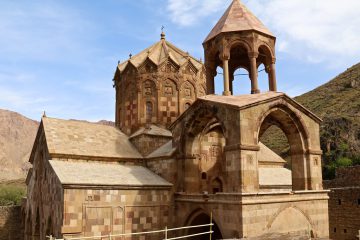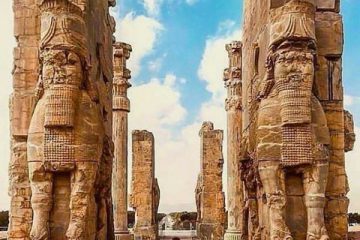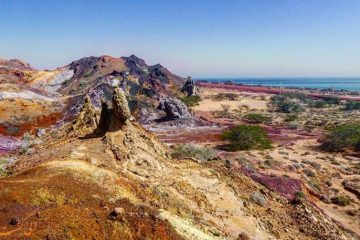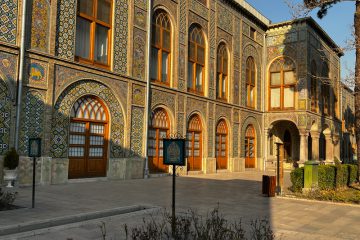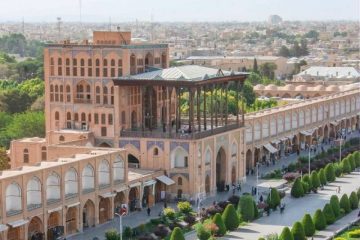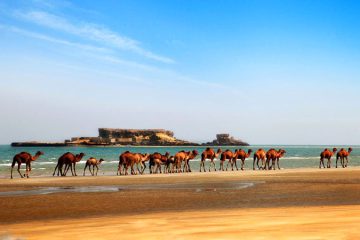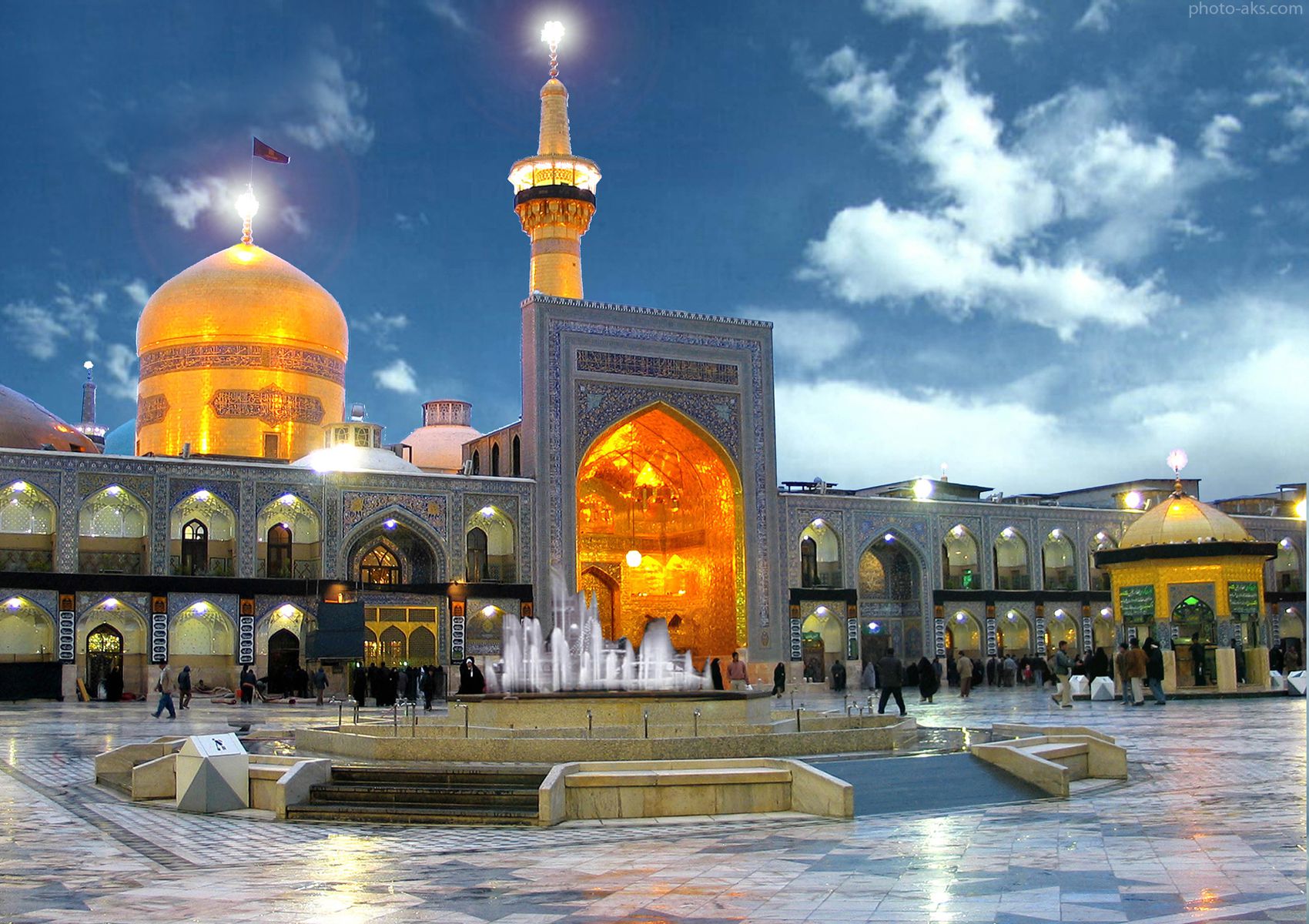
Shrine of Imam Reza
Understanding and valuing a country’s cultural heritage often hinges on grasping its religious underpinnings. Morality, social norms, and even aesthetics are deeply intertwined with the religious fabric of society. This pervasive influence is particularly evident in Muslim nations. However, delving into Islamic scholarship isn’t necessary to appreciate such dynamics during your visit. Simply observe how people regard what they hold sacred, and let empathy guide your connection to their way of life. For a profound insight into Shia Iran, we strongly suggest a visit to the Imam Reza Shrine, a focal point of spiritual life in the region.
Imam Reza Shrine, also referred to as the Imam Reza Sanctuary, stands as one of the grandest mosques globally. Encompassing nearly a million square meters, it comprises the mausoleum of Imam Reza, the Goharshad Mosque, a museum, a library, four seminaries, prayer halls, and various other facilities. Drawing in an ever-increasing number of visitors and pilgrims from Iran and beyond, the complex hosts approximately 28 million individuals annually.
The origins of the Imam Reza Shrine trace back to its days as a fortress and royal abode predating Islam. Situated in the village of Sanabad, it once functioned as a palace for soldiers and government administrators tasked with safeguarding the routes of Neishaboor, Sarakhs, Toos, and Radkan. Interestingly, the innermost structure of the complex was originally a Zoroastrian temple, reflecting the rich historical layers of the site.
Centuries following the Islamic conquest of Iran, the palace underwent significant transformations. Originally known as Dar-ul-Imarah, it later became the final resting place of Harun al-Rashid, the Abbasid Caliph, in 809. Renamed Haruniyyeh, the temple within the complex was ordered to be demolished by al-Ma’mun, Harun al-Rashid’s son and successor. In 818 A.D., Caliph al-Ma’mun caused further turmoil by assassinating Ali al-Reza, the 8th Imam of Shia Muslims. To quell the unrest sparked by the murder of a direct descendant of Prophet Muhammad, al-Ma’mun directed the burial of the Martyred Imam alongside his father, Harun al-Rashid. Consequently, Haruniyyeh was rechristened as the Imam Reza Shrine. Similarly, the village underwent a name change to Mashhad, derived from Mashhad al-Reza, meaning “the place of Reza’s martyrdom.”
Throughout a millennium, the Imam Reza Shrine witnessed profound changes. Shortly after the martyrdom of Ali al-Reza, a dome was erected above his shrine, marking the beginning of its transformation. The influx of pilgrims not only enriched the spiritual atmosphere but also catalyzed the economic prosperity of Mashhad. Bazaars flourished, and resting places emerged around the sacred site, fostering a thriving community. However, this growth raised concerns for Sebuktagin, the Ghaznavid Sultan, who banned pilgrimage and ordered the city’s devastation by his soldiers. Yet, in 1009, his son Mahmud of Ghazni reversed this stance, undertaking the task of rebuilding and expanding the shrine, reaffirming its significance.
How to travel to Iran?
Radiant Miracles
In 1086, Sultan Sanjar embarked on a grand endeavor: the refurbishment and enlargement of the Imam Reza shrine, inspired by the miraculous recovery of his son during a visit. The dome received its initial adornment with opulent golden textiles, fulfilling the wish of a noblewoman. These textiles, subsequently renowned as Seljuk textiles, added to the shrine’s splendor.
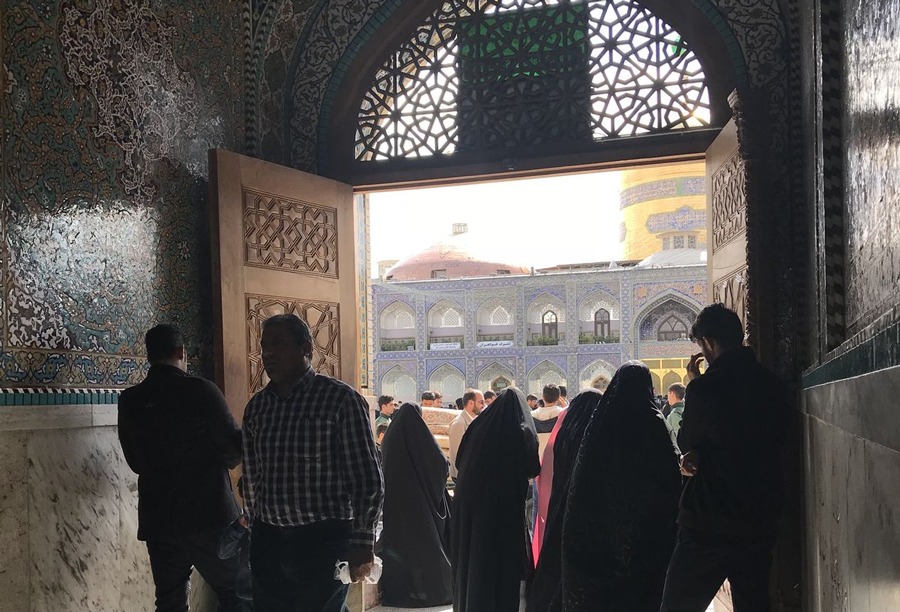
Enduring the tumult of the Mongol invasion, the holy site not only survived but also thrived, expanding further under the patronage of a Mongol ruler who embraced Shia Islam. Then, in 1418, Goharshad, the esteemed wife of Sharukh Mirza, left her indelible mark by commissioning the construction of a mosque adjacent to the shrine, now celebrated as the Goharshad Mosque.
Grand Expansion
Throughout the Safavid era (1501-1736), the complex, which had weathered damage from invading Uzbeks, underwent extensive renovations and enhancements. With the declaration of the Twelver Shi’ite sect as the state religion, Mashhad and the Shrine ascended in significance. The site underwent significant expansion, receiving patronage even from Indian rulers.
Subsequent rulers, including the Afsharids (1736-1796), Qajars (1789-1925), and Pahlavids, all contributed to the expansion and embellishment of the sacred site. Some constructed courtyards and porches, while others adorned the interior with gold-coated bricks, mirrors, and paintings, enriching its grandeur.
Shrine Expansion in the Islamic Republic
Following a triumphant revolution and the formation of the Islamic Republic of Iran, revolutionary leaders prioritized the expansion and renovation of the Imam Reza Sanctuary more than ever before. The area of the Shrine burgeoned from 12 acres to nearly 100 acres, reflecting a significant transformation. Numerous development initiatives were undertaken to modernize facilities and infrastructure while safeguarding the building’s historic identity and preserving its cherished heritage

Prominent Sites Within the Imam Reza Sanctuary
Comprising a rich tapestry of mosques, courtyards, and halls, the Imam Reza Sanctuary boasts several remarkable buildings distinguished by their unique features. Offering a glimpse into these structures can provide visitors with valuable insights. However, it’s essential to acknowledge that these brief descriptions merely scratch the surface compared to the enriching experience of a guided tour led by an expert.
The Shrine of Ali al-Reza
At the heart of the complex lies the tomb of Ali al-Reza, nestled beneath a resplendent golden dome. This sacred site, built atop his burial ground, holds immense spiritual significance. Adorning the walls are Islamic scriptures, including Hadiths from Prophet Mohammed and his descendants, providing a profound connection to the faith. Encircling the tomb, intricately inscribed Quranic verses from Sura al Jumaah, penned by the renowned Safavid Calligraphist Reza Abbasi, imbue the space with reverence.
Here, the fervor of pilgrims reaches its zenith as they seek solace, healing, and relief from worldly burdens. Above all, they beseech the intercession of the Imam for divine mercy upon their eternal souls.
The Courtyards

Surrounding the burial site of Imam Reza are seven expansive courtyards, each serving as a gathering space for the multitude of visitors. These areas not only accommodate the crowds but also act as extensions of mosques during public prayers. Known as Sahns in Farsi, each courtyard boasts its distinctive design, adorned with surrounding balconies and adorned with fountains for ablution, a ritual purification with water practiced by Muslims. Together, these courtyards span over 30 acres, enriching the vast expanse of the Imam Reza Sanctuary.
The Halls
Four main halls, known as Bast, and twenty-one inner halls, called Riwaq, stand as guardians between the courtyards and the burial chamber of Imam Reza. These four primary halls, meticulously named after esteemed Muslim scholars, symbolize their vital role in safeguarding the sanctity of the faith and protecting the innermost sanctuary.
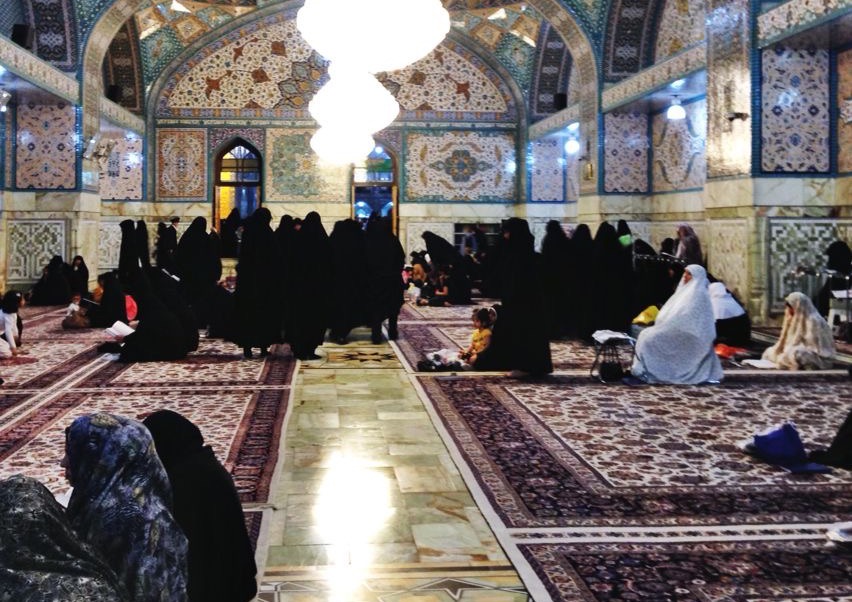
Goharshad Mosque: Jewel of the Imam Reza Sanctuary
As a vital component of the Imam Reza Sanctuary, Goharshad Mosque stands as a testament to architectural magnificence and spiritual significance. Renowned as one of Iran’s most magnificent mosques, it attracts countless visitors. Its breathtaking design, intricate ornamentation, and exquisite textile work render it a marvel of architecture. Constructed under the supervision of the esteemed 15th-century Iranian architect Ghavameddin Shirazi, the mosque embodies the collaborative mastery of artisans from Shiraz and Isfahan, showcasing their unparalleled skill and devotion.
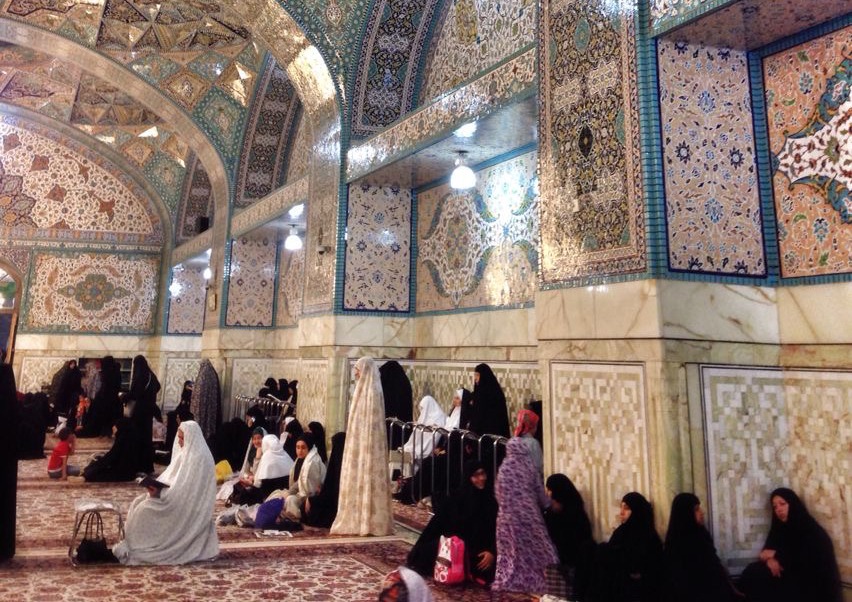
Building the mosque and its courtyard spanned a remarkable 12-year endeavor. However, the ongoing challenge of maintaining and renovating this sprawling marvel, covering an area of 9400 m2, proved to be a perpetual responsibility. Nonetheless, successive generations of artists dedicated themselves to upholding its beauty and sacred essence over the centuries. A glance at the main portal and the intricately crafted arches within the ceiling attests to the significance of this effort: The fusion of holiness and beauty demands, if not commands, our unwavering attention.
Museums Within the Complex
Nestled within the expanse of the Imam Reza Sanctuary are four museums, each a treasure trove of historical significance. The primary museum, home to the original tombstone of Imam Reza, ranks among the nation’s most esteemed repositories. Its extensive collection spans from ancient coins and medallions to firearms and timepieces.

The Quran Museum, the second in line, showcases handwritten copies of the Quran alongside a diverse array of ancient writing implements. It also boasts a rich assortment of religious scriptures, flags, and paintings.
Ascending three floors, the Carpet Museum exhibits a vast array of carpets from across the nation, showcasing various weaving techniques and regional styles.
Lastly, a former public bath has been transformed into an anthropology museum, offering insights into the bathing practices of the old through displays of accessories, venues, paintings, and artifacts.
Ideal Time to Explore
For an enriching experience, consider planning your visit to the Imam Reza Sanctuary during the Nowruz holidays, a time when festivities abound. Alternatively, immerse yourself in the cultural ambiance during religious ceremonies such as Ashura or Ramadan. While we’ve only scratched the surface of this sanctuary’s rich history and significance, a visit promises to reshape your perspective on contemporary Iran and its culture. For reservations and further details on our tours, reach out to us at Tours of Iran.

